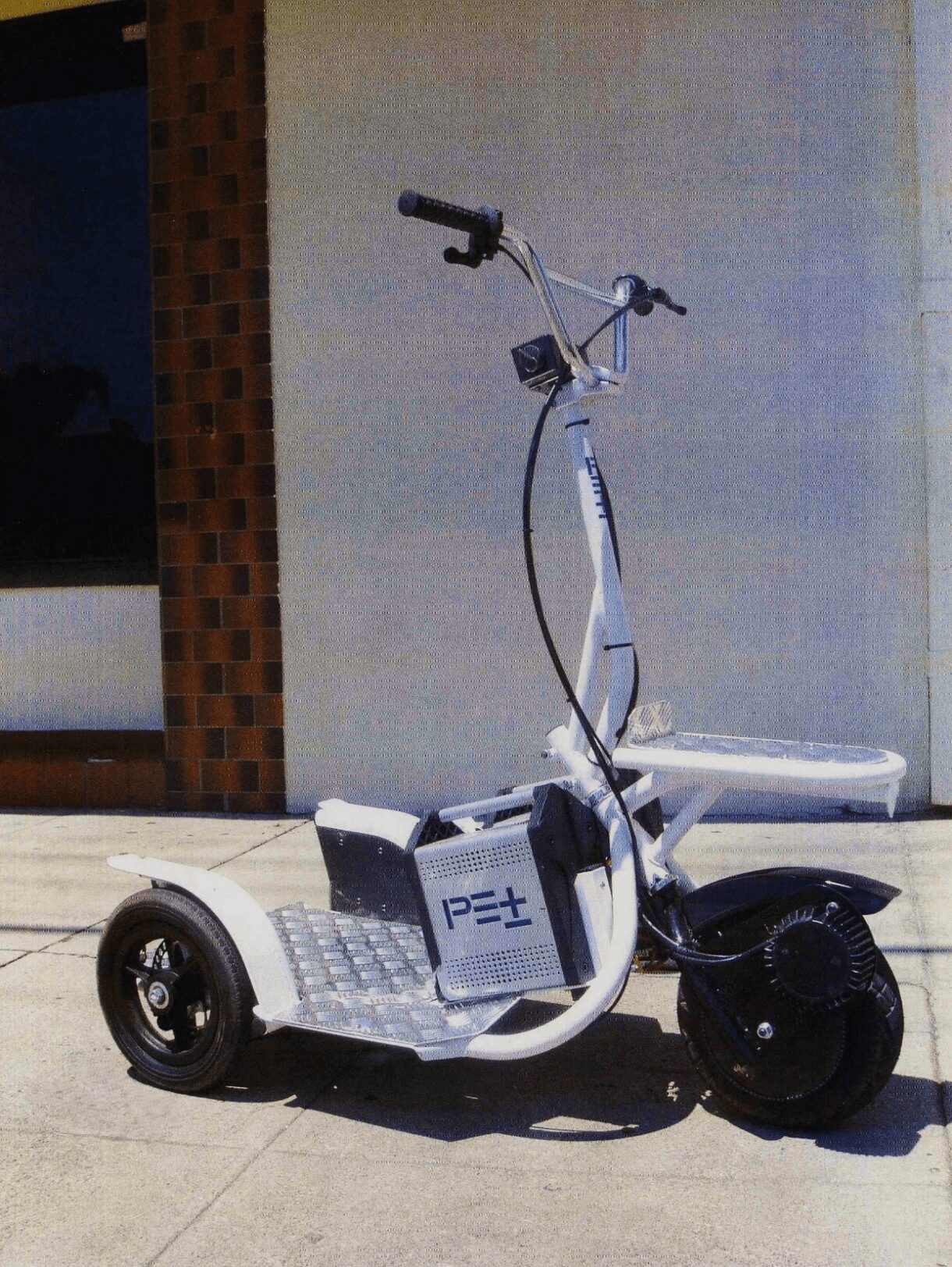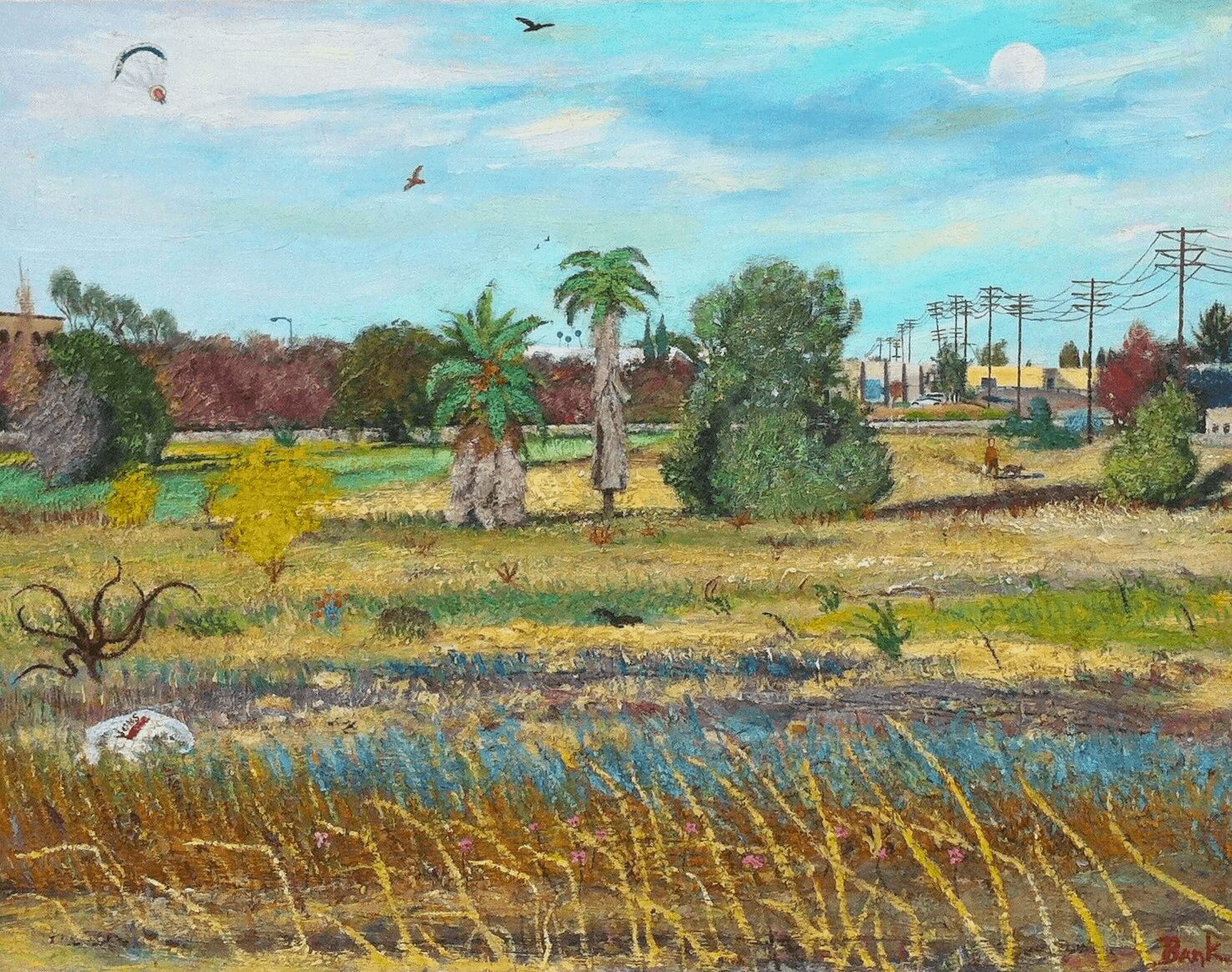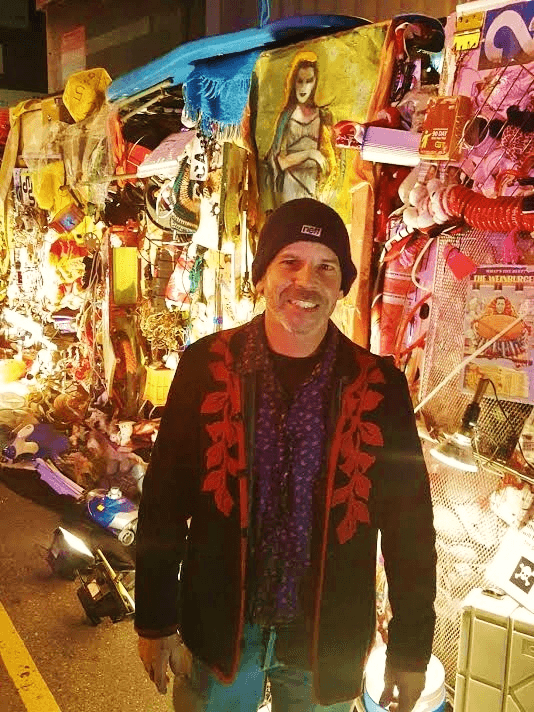Alright – so today we’ve got the honor of introducing you to Five-Star Todd AKA: Todd Bank. We think you’ll enjoy our conversation, we’ve shared it below.
Five-Star Todd , thanks for joining us, excited to have you contributing your stories and insights. Can you talk to us about a project that’s meant a lot to you?
In 1993, I dedicated my life to making art. It was a Van Gogh thing; His colorful landscapes and exciting flower paintings burned like fire in my blood. I doubled down and began pursuing my dream of painting pictures.
My first studio space was a loft, in a Culver City dome home. Making art in a loft is not easy, the tiniest sound on the bottom floor travels up the curved walls and into it. I ignored the excessive noise and made a nice floral painting (JPG 1). Success! I can paint pictures. But I needed a different studio.
My second studio was a garage in Santa Monica. It was awesome in the beginning, painted about fifty canvases. The house was directly under the Santa Monica Airport’s flight path; The buzz, pop, buzz of constant incoming airplanes was irritating. Not awesome after a while. An idea came to me.
In the 1880s, Van Gogh used a wagon to carry his art supplies to an outdoor painting location. In the 1920s, landscape painters used automobiles for the same reason. I purchased a neighbor’s 1970 VW camper van to begin painting in quiet nature.
I painted in Malibu: Zuma Beach, Encinal, and Temescal Canyon, three times a week. My boundaries expanded. I painted the Channel Islands (JPG 2) and Mammoth Mountain areas. Sunshine, light, and color! The canvases piled up—lots of them. I smelled like oil paint.
It was 1994. I needed a better studio. I worked extra hours at the California Pizza Kitchen (CPK) and got the money. Then it happened. On January 17th, at exactly 4:31 am, my TV fell onto my bed. I awoke with my paintings flying around the room, like colorful canvas birds. The Northridge earthquake rolled and rolled. It never seemed to stop. Yes, I was scared.
6:00 am. broke. The building could explode; save the paintings, I thought. I loaded my best work into the camper van. My neighbor noticed a Picasso I had duplicated for fun and yelled over to me, “Hey, there’s an art gallery near Beverly Hills that sells masterpiece copies like that.” On the day that LA had its worst earthquake, I got my first art job. It was a surreal day!
The owner of the Recreations of the Master’s Gallery (JPG 3) chose “Boats on the Beach,” a Van Gogh for me to copy. Funny. Six months went by. I leaped. After working at CPK for ten years, I quit my job to live off of my masterpiece replicas, not my landscape or floral paintings.
Over the few years that I had been obsessively painting, I had sold only a few original canvasses: one at a restaurant, some in front of my studio. My focus was making the work, not selling it. I had to get another job. Driving a limousine helped. I moved into a one-bedroom studio, got faster painting the copies, and quit the limo job. Happy!
Like a goldfish getting a bigger bowl, I began to grow. Over the next five years, my original art went from two-dimensional oil paintings to three-dimensional sculptures made with found objects, then to inventing electric scooters. Yeah, it was a strange segue for me too.
My 3-wheel electric scooter (JPG 4) invention was unique. At the time, all e-bikes and e-scooters were plugged into a wall socket for hours to recharge their batteries, making the vehicle unavailable for use. My e-scooter solved this problem; Its dead batteries could be “swapped out” for freshly charged batteries in seconds. No plugging in!
Since the age of five, I dreamed of painting pictures. It was no longer a dream. It was real, and I was living it. But my invention was real too, and the world needed it, I thought. There was a tug-of-war between my left brain and my right brain. The left brain would win. The invention felt more meaningful to me than another landscape oil painting or found object sculpture.
In 2002, the Los Angeles Department of Water and Power (LADWP) funded my e-scooter and battery-swap station invention. A battery-swap station is essentially a gasoline station with batteries and not gas. It provides charged batteries to commuters riding e-bikes, e-scooters, e-motorcycles, and more. World-changing is that these batteries are handheld, universal, and can also power generators, lawnmowers, etc.
Our company, PET, traveled across the US several times demonstrating the battery-swap station system to government organizations and the public. Everyone loved it! We expanded our tour and headed to Europe, Africa, and China. All was not good back home in the US, though.
In 2006, politics killed the EV industry in America. A movie called, Who Killed the Electric Car was made about the tragedy. No despair. It was OK. I did what I had set out to do: educate the world about light electric vehicles and battery-swap stations for them. Moreover, my right brain wanted to get back to making art.
Without looking back, I returned to painting pictures (JPG 5 and 6), making found-object sculptures, and converting my 1990s art into a new type of art that I didn’t know what it was yet. Ten years passed quickly; I had done the same thing to my art that I had done with my electric vehicle and battery-swap station invention. I turned it into a disruptive technology.
Landfill Mitigation Art is more than diverting unwanted materials away from landfills and upcycling them into artwork, furniture, fashion, and other things: disrupting the billion-dollar landfilling business. It is also a new type of studio that the city provides qualified artists who upcycle unwanted materials from the community into their work, and they are located everywhere in the city, like battery-swap stations. And artists ride cargo e-bikes to collect their art materials.
In 2022, I created the Landfill Mitigation Art Museum (LMAM) project: a showpiece for exotic art exhibitions. It is also a research center where we develop landfill mitigation science and technology for the Web 3 blockchain, and more, and our results are free to whoever is interested in them.
To answer the question, what is the most meaningful project I have ever worked on? It was the light electric vehicle and battery-swap station project, but now it’s the Landfill Mitigation Art Museum project. Interestingly, in Taiwan, there are currently more battery-swap stations than gasoline stations. Gogoro is the largest battery-swapping network.

As always, we appreciate you sharing your insights and we’ve got a few more questions for you, but before we get to all of that can you take a minute to introduce yourself and give our readers some of your back background and context?
Who am I?
My father was a TV and film actor and a craftsman. He built furniture and taught me how to use a skill saw before the age of 10—without injuring myself. At the age of 11, our family remodeled our kitchen together. We did all the work. The old wood from that remodeling project sat in our driveway for months. Then I upcycled it into an eight-foot-tall skate ramp.
In the summer, my days were filled with skateboarding and BMX trick riding—on the ramp. In 1977, there was no such thing as BMX ramp riding. My older brother and I invented that sport. We were also the first to ride BMX bikes in skateparks, too.
My mom was a housewife and hobbyist oil painter, and her art was proudly hung in our living room throughout my entire childhood. They were not crappy hobbyist oil paintings; My mom could have easily become a professional artist. Was she content being a housewife? I never asked her, but I hope so.
From ages 13 to 15, I learned about photography. My father helped and encouraged my older brother and me to convert a backyard shed into a darkroom for developing pictures. My current understanding of artwork composition probably comes from my picture-taking background.
Our family had very little money, making me the resourceful person that I am today. I grew up wearing my neighbor’s hippie hand-me-down jeans, making my skateboards, and fixing my BMX bike myself. All that was OK with me; It taught me how to live better and make life more interesting and fun.
We vacationed in the Eastern Sierras, too. I am very thankful for that. During the hardest times of my life, I have always had a peaceful place to escape to. Redwood trees and hiking around crystal-clear lakes have also made me who I am today.
How did I get into art?
More than a few instances in my life have made me an oil painter. One time, during an exhibition at an LA art museum, I walked into a room. Unprepared, a seascape painting hit me in the face with a strange and stunning beauty. Even though I had never tried before, I knew that I could paint like that, or at least I could try. After leaving the exhibition I was different. I had found a focus and saw things differently, especially the outdoors and its scenery.
The Upcycling Art Business, and My Work Discipline:
My goal as an oil painter had always been to create art and not to worry so much about selling it; The smallest feeling was always telling me to collect it for something. That art is now the LMAM Trust and project. With all that work in storage, in 2023, I began creating paintings for fine art collectors to purchase. Storage is expensive!
Nonetheless, I work on several different art projects at the same time. One is adding details to my past work for the LMAM Trust. The other is painting new works to sell to art collectors. The third is promoting my past work as an art museum exhibition. I hope to debut it in Los Angeles, thus bringing the plight of landfills into the city so people can see and feel that there is a fun solution to an ugly problem.
What type of products, services, and creativity do I provide?
The Five-Star Todd Studio provides original oil paintings for sale. Each piece can be framed with upcycled materials, or traditionally framed. My studio also sculpts unwanted materials into large installations that speak about cleaning the earth of seen and unseen litter. So far, the art installations have been focused on only exhibiting them and are not for sale.
From 2017 to 2019 my “Great Wall of Waste” (JPG 7 and 8) art installation was exhibited around Los Angeles. The work highlights the post-consumerism pollution that America’s relationship with China creates. People love the Great Wall of Waste! I hope to show it much more, but in a gallery room, and not outdoors.
What problems do I solve for my clients?
An artist who creates for art galleries or interior designers needs to be patient because there is always a lot of back and forth when discussing artwork details, shipping the art, and more. Listening is a strong point for me. I know that my past clients have always appreciated how I worked with them in that way.
Generally, an artist who lives off of their commissions needs to remember that those artworks are not their original work, and they need to make them as the gallery owner or their client sees them, and not so much of how they want them to appear. My good attitude towards that point of view is probably what kept me working as an oil painter for so many years.
What makes me so different from others?
Most of my friends have a nice home, a family, pets, etc., and I have none of those things. But I do have a huge exhibition of original work, most of which has never been exhibited and seen by the public. I hope that makes the first exhibition of it special. We will see! I guess you can say that I just dream differently.
What are you most proud of?
I am most proud of all of the artwork that I have completed, and my electric vehicle invention; The prototypes for the invention are on display at the Petersen Automotive Museum in Los Angeles, and other automotive museums.
I have also given away 300 to 400 paintings: 50 went to the Santa Monica Mountains Conservancy, another 50 paintings to various Santa Monica thrift stores, some to the American Cancer Society, to family, friends, co-workers, and even total strangers. But I do not give away paintings any longer.
What are the main things you want potential clients, followers/fans to know about you, your brand, your work, etc.?
Five-Star Todd art is not always pretty. Landfills are not pretty, and they are not organized so sometimes I make the work speak about that. But I don’t make those works disgusting to look at.
Some artists make art that is too disgusting or disturbing to look at. One example is Immersion (Piss Christ): a 1987 photograph by the American artist and photographer Andres Serrano. It depicts a small plastic crucifix submerged in a small glass tank of the artist’s urine. I think art like Piss Christ violates the boundaries of an artwork’s true purpose, which can be to teach or entertain the public, not to turn them away.
Sure, my Great Wall of Waste can be hard to look at too. But it is not disgusting. It is interestingly beautiful because it shows us who we are as human beings, and we are not inherently disgusting, just careless and wasteful when it comes to managing our unwanted materials. In my opinion, my artwork’s beauty is in its message of upcycling waste into something positive to look at, even if the aesthetics are not that pretty. Beauty is not necessarily always pretty!
With that said the public needs to know that I do not talk about landfills or any environmental issues at my art installations unless I am asked specifically to do so. Believe it or not, those installations are all about color, texture, funkiness, and then the environment. They are not doom-and-gloom!


What’s a lesson you had to unlearn and what’s the backstory?
I do not have a good answer to this question. It genuinely feels that every lesson I have learned in my life is a lesson that I need to learn. Unlearning a lesson would remove something of who I am today, and I am OK with who Five-Star Todd is. Sorry!


Can you share your view on NFTs? (Note: this is for education/entertainment purposes only, readers should not construe this as advice)
I spent easily ten to twenty hours researching NFTs, learning what they were, how they worked, and so on. It is gambling, speculation, and a scam. NFTs are legal, but I think they are a Ponzi scheme in the long run.
I understand that the art world is trying to find new things to keep it moving forward, but NFTs are the wrong pathway for this. A painting or sculpture is a tangible item that holds tremendous value as a physical thing that can be sold or traded over and over again for the life of that work; thus, generating jobs for society and money for the economy, not to mention culture: exhibitions.
Sure, NFTs can be traded or sold too, but there is no cultural significance in them because anyone can make an NFT from a random digital image or even from an NFT kit. There is no creativity or story behind the art, therefore there is no worth in an NFT from a cultural point of view. It is a few bytes of digital information produced for one reason, speculative gambling, and they are also a big waste of electricity.
But all this is just my opinion. Sadly, it does not appear that the NFT “market” is going to die out anytime soon.
Contact Info:
- Website: https://fivestartodd.com
- Instagram: In progress
- Facebook: In progress
- Linkedin: In Progress
- Twitter: Not going to happen!
- Youtube: In progress
- Yelp: In progress


Image Credits
Images are all property of Five-Star Todd


